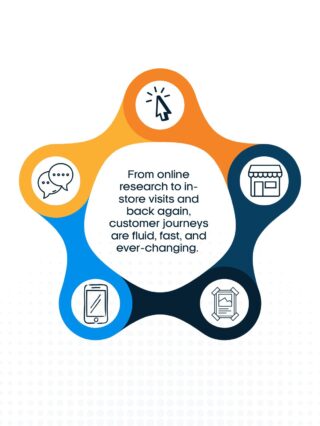The 2025 DTC National conference convened at a pivotal moment for pharmaceutical marketers, with conversations shaped by regulatory uncertainty, healthcare system strain, and the ongoing evolution of personalized, omnichannel engagement. Amidst these challenges, the tone was one of urgency—and optimism. Across panels, keynotes, and award showcases, a throughline emerged: DTC marketing must continue to evolve beyond awareness and brand-building to become a long-term driver of patient empowerment, HCP partnership, and systemic improvement.
Key Themes: What’s Changing, Fast
- Regulatory Shifts Demand Proactivity
Jim Potter’s breakdown of the RFK ad ban scenario underscored a truth the industry can’t ignore: regulatory scrutiny is sharpening. While the likelihood of sweeping bans remains low, the tone in DC is shifting, and stakeholders must scenario-plan with agility. Additionally, insider insights into layoffs within FDA’s OPDP (Office of Prescription Drug Promotion) raised red flags about slower guidance and longer feedback loops. For DTC marketers, that means a greater burden—and opportunity—for self-regulation that preserves both innovation and integrity.
- AI in Creative Workflow is a Competitive Advantage
Agency demonstrations of AI-enabled creative approval pipelines were among the most future-facing moments of the conference. Leveraging generative models and smart tagging to streamline MLR reviews not only accelerates time to market—it unlocks personalization at scale, solving one of the most operationally complex issues facing media and content teams today.
- The Myth of “Doctors Hate DTC” is Debunked
One of the most compelling voices at the conference came from a practicing HCP, who directly challenged a long-held assumption: that DTC ads frustrate physicians. Instead, the clinician affirmed that well-informed patients often initiate richer conversations, and that the true friction comes when ads are misaligned with real-world clinical decision-making. The takeaway: the goal isn’t to advertise at patients, but to advertise with their journey in mind.
Key Takes: What to Double Down On
- Point-of-Care is the New Power Position
As physician burnout and staffing shortages accelerate, the Point-of-Care (POC) space emerged as a critical battleground—not only for attention, but for meaningful patient outcomes. Sessions emphasized the need to create technology-enabled support systems that respect the physician-patient relationship while delivering just-in-time value through tools, reminders, or content that enhances care quality.
- Personalization Needs to Be More Than a Buzzword
From targeting logic to content variation, personalization was everywhere on the agenda—but the most powerful ideas centered not just on ad delivery, but on experience orchestration. Creating coherent, respectful, and relevant paths for patients requires smart data use, media fluency, and creative stewardship, especially in the complex pharma ecosystem.
- Campaigns Should Act Like Movements, Not Moments
Several standout case studies and award-winning campaigns shared a critical DNA: they built something bigger than a media plan. By investing in long-term platforms and community-building, these initiatives moved beyond traditional KPIs to unlock advocacy, adherence, and emotional connection, outcomes that transcend the fiscal calendar.
- There’s Renewed Energy Around Industry Purpose
Perhaps most important was the intangible but palpable sense of shared purpose across attendees. In networking conversations, in panel dialogue, and onstage during award moments, there was a quiet consensus: we must do better—for patients, for caregivers, for HCPs, and for each other.
Looking Ahead: A Call to Action for DTC Leaders
As patient expectations rise and the regulatory and healthcare landscapes shift beneath our feet, the mandate is clear: we must raise the bar for DTC strategy—creatively, operationally, and ethically. That means:
- Futureproofing creative and media systems for personalization at scale, without adding friction for regulatory review.
- Investing in sustained patient value rather than episodic brand awareness.
- Deepening cross-functional partnerships with medical, regulatory, data science, and media counterparts to co-create smarter, safer experiences.
- Redefining Point-of-Care not as a channel, but as a critical human moment where support matters most.
The future of DTC isn’t just about driving scripts—it’s about restoring trust, advancing health literacy, and helping patients make confident, informed decisions. The opportunity is real. Let’s not waste it.
Contributors: Stephanie Alexander




